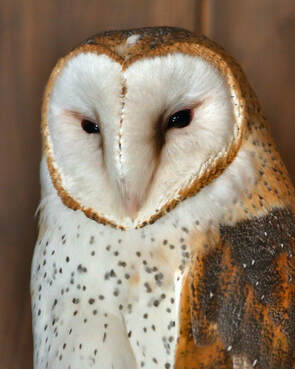Barn Owl (Tyto alba)
|
Physical Description: Barn Owls have distinctive heart-shaped faces with small stiff feathers around the edge of the ‘facial disc’. They have a mix of brown and gray on the head, back, and upper wings, and are white on the face, body, and under wings. Barn owls grow to 1 – 1.5 ft in height and 1-1.5 lbs. Females are larger than males. Females often have darker brown feathers around the rim of the facial disc as well as darker bars on the tail and small black spots on the chest and underside of the wings. Males are generally lighter and a purer white underneath. Habitat: They live near large areas of open land over which to hunt. This can either be marshes, grasslands, or mixed agricultural fields. For nesting and roosting, they prefer quiet cavities, either in trees or man-made structures such as barns or silos. Range: Barn Owls are found on every continent except for Antarctica; however, they avoid polar and dessert regions on each continent. Diet: Barl Owls are carnivores. They prefer rats, voles, shrews, and mice. A wild Barn Owl typically eats 4 small mammals every night, or 1,460 per year! Food is often swallowed whole; bits of fur and bone are then regurgitated (coughed up) as an owl pellet. References: 1 https://www.iucnredlist.org/species/22688504/155542941 |
Life Span: Barn Owls live up to 4 years in the wild. They have been known to live up to 30 years in human care.
Social Structure: Barn owls are solitary or found in mating pairs. They are usually monogamous, sticking to one partner for life unless one of the pair dies. Status: Least Concern1 Other: Their hearing is aided by the fact that they have lop-sided ears. One is higher than the other, which helps them to pinpoint the exact location of tiny sounds. |








